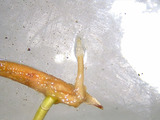
Nassella seeds germinated in water.Image credit: Fernando Agudelo-Silva
- Subject:
- Agriculture
- Biology
- Botany
- Forestry and Agriculture
- Material Type:
- Diagram/Illustration
- Author:
- Emily Fox
- Date Added:
- 08/22/2022

Nassella seeds germinated in water.Image credit: Fernando Agudelo-Silva

In accordance with the UN’s Sustainable Development Goal #2: “Zero Hunger” which promotes sustainable agriculture, students are asked to help support the local pollinator population. Seedballs can be prepared with seeds of plants that provide food and nesting opportunities for pollinating bees, butterflies, other insects, bats, and birds. Thus, students are supporting the very beings that ensure the success of our food chain and 1 out of every 3 bites that we take. In this lesson students make seedballs and a model of a catapult for distributing the seedballs using Strawbees, a micro:bit, and the Robotic Inventions kit.

This section is a textual vision resources for nursery and gardening introduction

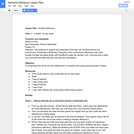
Objective:
To understand the three common deficiencies of nutrients that cause stunted growth in plants
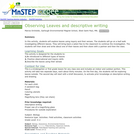
In this activity students will explore leaves using inquiry and their senses.

This expository nonfiction text is about how an oak tree may become vulnerable to disease from its bark being damaged by a bear clawing it.

"Opening the World through Journaling: Integrating Art, Science, and Language Arts" teaches children to become keen observers of the natural world by drawing and writing about the plants and animals in situ. In a set of nested exercises, students use games to gain confidence in drawing and writing as a way to gather information. Later, they employ these skills to put together a field guide, make treasure maps, and to write short stories and poems.

This illustration depicts the last stage of aerobic respiration: oxidative phosphorylation.
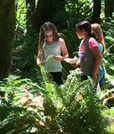
Students are invited to submit an essay about invasive plants, to a local newspaper is publishing student essays about important environmental topics. The essay will be based on the research conducted through reading two sources, a fact sheet, and a blog, and watching a video about invasiveplants. Includes teacher directions and scoring notes.

The purpose of this Performance task is to provide students with an opportunity to problem solve based on a real-world situation (Claims 2 & 4). Due to the nature of the task, there are a variety of mathematical approaches students can take to successfully complete the task, however the mathematical approach presented in Act Three of the task addresses CCSS Domain of Operation and Algebraic Thinking. With this approach, students are shown different strategies for using multiplication to find the solution. Includes slides to support the implementation of “The Winner Is…Native Plants (3-5)” Math Performance Task with charts, images, etc.
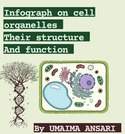
infograph on plant cell organelles.
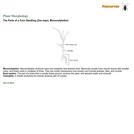
This illustrated guide to a corn seedling (Zea mays, Monocotyledon) is designed to help students recognize and learn the plant's individual parts. Along with an explanation of monocotyledon embryos, it includes a short description of the root system and coleoptile.

This illustrated guide is designed to help students recognize and learn the different parts of a flower. The single Web page can be easily printed for use at field sites.
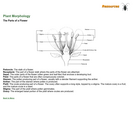
This illustrated guide is designed to help students recognize and learn the different parts of a flower. The single Web page, which can be easily printed for use at field sites, identifies these parts: plant stigma style ovary stamen anther filament petal ovule with embryo sac sepal receptacle peduncle.
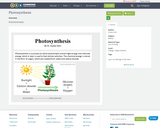
PHOTOSYNTHESIS

This illustration shows the Calvin Cycle for C3 plants.

The following is an OER completely adjustable lab worksheet for an "at home" photosynthesis lab. Students chose a variable to test and conduct an experiment at home. This lab can be adjusted to align with the NGSS standard, MS.LS1.6.

This lesson will utilize the talking drawings strategy, in which students will begin the lesson by drawing a picture of a plant to illustrate how they think plants make their own food. Then, the teacher will introduce the process of photosynthesis using an interactive presentation to explain photosynthesis in a pictorial format. As the teacher describes the process, the students will create a scientifically accurate drawing of a plant engaging in photosynthesis. Lastly, students will create a writing piece that will describe the process of photosynthesis and construct a scientifically accurate illustration of the process of photosynthesis. This lesson results from the ALEX Resource Gap Project.
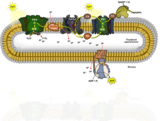
This illustration shows both the linear and cyclic flow of electrons during the light reaction of photosynthesis.